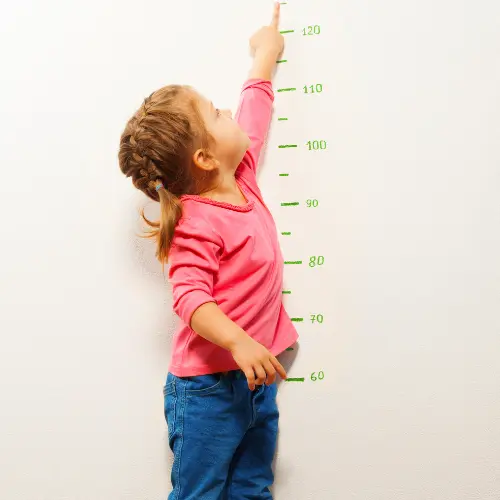Are you curious about the average weight for 6-year-old boys and girls? As a parent or caregiver, it’s only natural to want to ensure that your child is growing and developing within the normal range. Understanding the average weight for children at this age can provide valuable insights into their overall health and well-being.

In this guide, we will find out the average weight ranges for both boys and girls at the age of 6. We’ll explore the factors that can influence weight, such as genetics and lifestyle, and provide tips on how to support your child’s healthy development.
Contents
Average Weight for 6-Year-Old Boys
The average weight for a 6-year-old boy can vary depending on several factors, including:
- Height: Taller boys tend to weigh more than shorter boys of the same age.
- Genetics: Family history and genetic predisposition can influence body size and composition.
- Body composition: Muscle mass tends to weigh more than fat tissue, so boys with higher muscle mass might weigh more than those with less muscle but the same overall size.
- Ethnicity and geographic location: Average weights can differ slightly between different ethnicities and geographic regions.

However, according to the Centers for Disease Control and Prevention (CDC):
- The average weight for a 6-year-old boy in the United States is 45.4 pounds (20.6 kg).
- The healthy weight range for a 6-year-old boy is typically between 40.5 and 64 pounds (18.4 to 29.1 kg).
Body Weight Percentile Chart for Six year old boys
| Percentile | Weight (Ibs) | Weight (kg) |
| 3rd | 36.4 lbs | 16.5 kg |
| 5th | 37.3 lbs | 16.9 kg |
| 10th | 38.9 lbs | 17.6 kg |
| 25th | 41.9 lbs | 19 kg |
| 50th | 45.8 lbs | 20.8 kg |
| 75th | 50.6 lbs | 23 kg |
| 90th | 55.8 lbs | 25.3 kg |
| 95th | 59.6 lbs | 27 kg |
| 97th | 62.3 lbs | 28.3 kg |
Average Weight for 6-Year-Old Girls
Frequently Asked Questions
How much weight should a 6-year-old put on in a year?
The average weight gain for school-aged children between six and twelve years old is about 5 to 7 pounds per year.
What is the average size of a 6-year-old boy?
The average height of a 6-year-old boy is approximately 45 inches, and the average weight is around 45 pounds.
What is considered overweight for a 7-year-old?
A child is considered overweight if their BMI is greater than or equal to the overweight cut-off values for their age.
What should a 6-year-old girl weigh?
On average, a 6-year-old girl should weigh around 44 pounds.
What is considered underweight for a 6-year-old?
A child whose weight falls below the 5th percentile is considered underweight. For example, a 6-year-old who weighs around 36 or 37 pounds is in the 5th percentile.

Hello, I’m Ravindra. Over the years, I’ve immersed myself deeply into the world of fitness and health, transforming both my body and mind. Writing has allowed me to share my journey, insights, and expertise with those just starting out and seasoned fitness enthusiasts alike. Beyond just routines and diets, I believe in inspiring others to adopt a holistic approach to well-being.


